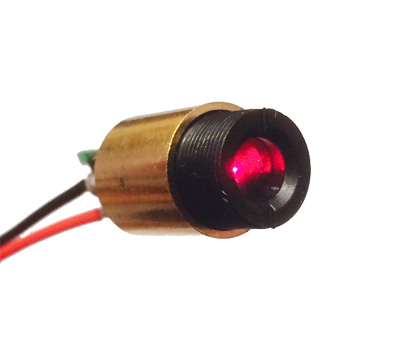I recall someone making an animated hologram on Super8 (or 8mm) from a long time ago. I can't recall the details of how that one was done, but I know that the hologram was, of course, very tiny: the size of the 8mm frame. The projector had a laser light source, and no lens. You basically stared into the projector gate to see the hologram.
Lately I've been exploring how to digitally synthesise a hologram, where one would then just print that, by conventional "film out" means onto film. And project laser light through it.
Lasers are now very cheap. Think of those laser pointers you can pick up for less than $10.
While these can be used for holography there are versions specifically made for holography, that are not much more expensive. They use the same diodes. The following one is able to produce holograms up to the size of 4" x 5" (102 x 127mm) which is more than enough considering the size of Super8 (or 16mm for that matter).
http://www.integraf.com/shop/holography-laser

The same site has a tutorial on simple holography:
http://www.integraf.com/resources/artic ... -holograms
Now making a traditional hologram isn't what I actually have in mind - but its the techniques used that are of interest. And how they might adapted for some experimental film making. In any experiment along these lines the first task is always to just deal with the basic raw materials and get some physical feel for the interaction between the materials.
For example: just using the laser like a pen, and literally "drawing" directly onto raw film stock with it. A work in it's own right can be done in this way. Just move the laser around over the film stock and process the results. Build up a feel for the difference between moving the pen quickly vs moving it slowly. One can then get a bit more technical and note the approximate distance/time involved in each move of the pen. To get an understanding of the difference in density of the result.
And one needn't go any further than this. A work made by drawing directly on film with a laser pointer.
For what I have in mind, it's the same thing: drawing on film with a laser. Its fundamentally no different. But one elaborates the laser by putting a filter in it's path. A simple filter can be made from some junk film off the cutting room floor. Especially if it has some image. For this will create a complicated pattern on the film when held between the laser and the raw film stock. The details in the filter film will diffract the laser light causing complex interference patterns to appear on the print film. One can get some wild abstract results with such.
Now an interesting thing here is that while the filter might contain a pictorial image, and the pattern exposed on the film is an abstract interference pattern, there is a physical relationship between the two that in principle allows the abstract pattern to be transformed back into the pictorial image that was otherwise employed as a filter. Of more interest to me is not reconstructing this filter image, but doing the opposite: creating an abstract interference pattern, that when illuminated by laser light, creates a pictorial image on the print film.
Now it goes without saying that doing this would need a bit more work than waving the laser and filter around by hand. But not too much more work. A simple way to do this is to make a filter on film and run it through a film projector where the light source for the projector has been replaced with a laser. And the print film runs through a camera. In other words: an optical printer setup. However unlike an optical printer there's no lens between the filter film and the camera film. It's a lensless printer. No focusing required.
But the very complicated part of this process is not the mechanical setup but computing the filter. Or at least it is in my take on this. To compute an interference pattern, that when illuminated by laser light, creates a pictorial image on the film.
Which is what I like about this particular project - simple mechanics but a complex digital problem to solve.
In the mean time I'll have some fun drawing some doodles on film with a laser pointer.
C

